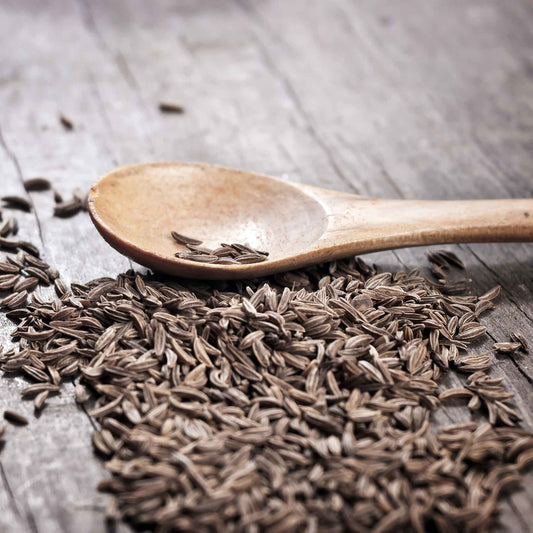-
main-collection-product-grid

Cumin Seeds
Flavorful and fragrant herb used in bread and savory curry saucesSaleCumin Seeds
Flavorful and fragrant herb used in bread and savory curry saucesRegular price As Low As $4.99Regular priceUnit price per$28.99Sale price As Low As $4.99Sale -
main-collection-product-grid

Cumin Seeds - Black
Top ranked ingredient in herbal medicine for over 2000 yearsSaleCumin Seeds - Black
Top ranked ingredient in herbal medicine for over 2000 yearsRegular price As Low As $4.99Regular priceUnit price per$52.99Sale price As Low As $4.99Sale
Growing cumin in your garden
- Prefers full sun exposure
- Highly aromatic herb
- Commonly used in Asian, Indian, and MIddle Eastern cuisine
- Known to increase antioxidant intake, promotes digestion, and provides iron
Cumin has great history as an important ingredient
First introduced to the Americas by Spanish and Portuguese colonists, cumin is an annual herbaceous plant that is commonly used to flavor Indian, Middle Eastern, and Asian cuisine. Used as an exotic spice for thousands of years, cumin most likely originated in Southwestern Asia, Central Asia, or the Eastern Mediterranean. In the ancient Egyptian civilization, cumin was even used as a preservative in mummification. Ancient Roman cuisine relied heavily on cumin. And, much as pepper is frequently used today, the ancient Greeks kept cumin at the dining table, and this practice still continues today in Morocco. It has been used for millennia in India as an important ingredient in countless recipes, and is one of the forming ingredients in many spice blends.
The many uses of cumin oil and seeds
Volatile components of cumin oil are used in production of a variety of perfumes, essential oils, and flavors. It's even sometimes used in cosmetics. In India, cumin seeds are ground to a powder and used in tablets, or processed with ghee, a clarified butter. Traditional medicine practices in some countries also include the usage of cumin seeds, tho there is no scientific evidence to support the use of cumin as a medicine.
What to know about planting cumin seeds
When planting cumin seeds, keep in mind that they need a long and warm season to thrive. Start the seeds inside about four weeks before the final frost date in spring. Once temperatures reach a consistent low of 60°F you can transplant cumin outdoors. As a native to the Mediterranean, cumin is not frost-resilient. Soaking seeds for around eight hours before planting will increase your chances of germination. Cumin should be planted in rows, in groups of four seeds every four to eight inches, and about two feet of spacing between rows. Once the seedlings have grown to about two inches tall, thin them out to one plant every eight inches. On average, germination takes approximately 14 days.
When is cumin ready to harvest?
Cumin needs about four months of warm and sunny weather to mature and be ready to drop seed. You'll know it is ready for harvesting by hand once you see the bloom of the white or pink flowers of the plant. You can cut the seed heads to dry inside as late in the season as possible, or once you start to see the seeds drop on their own. It is advisable to mist the plants regularly to keep them hydrated but not over watered.
For more information about planting, growing, and caring for cumin seeds, see our Cumin Seeds Planting Guide.

